31 巻, 5 号
選択された号の論文の7件中1~7を表示しています
- |<
- <
- 1
- >
- >|
Review Article
-
2011 年 31 巻 5 号 p. 382-392
発行日: 2011年
公開日: 2011/12/09
PDF形式でダウンロード (442K) -
2011 年 31 巻 5 号 p. 393-398
発行日: 2011年
公開日: 2011/12/09
PDF形式でダウンロード (199K)
Special Issue: Osteoimmunology and vascular biology
Brief Review
-
2011 年 31 巻 5 号 p. 399-403
発行日: 2011年
公開日: 2011/12/09
PDF形式でダウンロード (60K)
Mini Review
-
2011 年 31 巻 5 号 p. 404-412
発行日: 2011年
公開日: 2011/12/09
PDF形式でダウンロード (313K) -
2011 年 31 巻 5 号 p. 413-419
発行日: 2011年
公開日: 2011/12/09
PDF形式でダウンロード (186K)
Mini Review
-
2011 年 31 巻 5 号 p. 420-424
発行日: 2011年
公開日: 2011/12/09
PDF形式でダウンロード (353K) -
2011 年 31 巻 5 号 p. 425-430
発行日: 2011年
公開日: 2011/12/09
PDF形式でダウンロード (130K)
- |<
- <
- 1
- >
- >|
